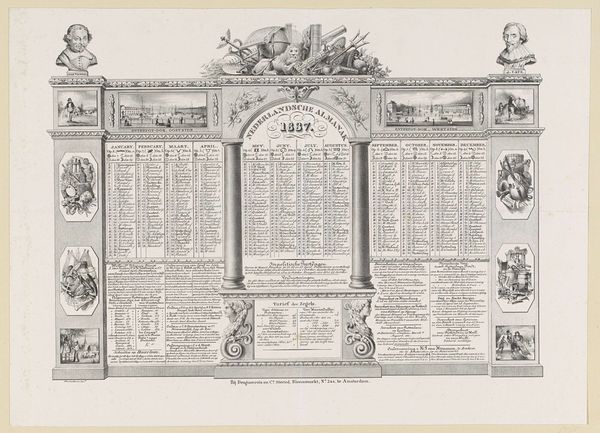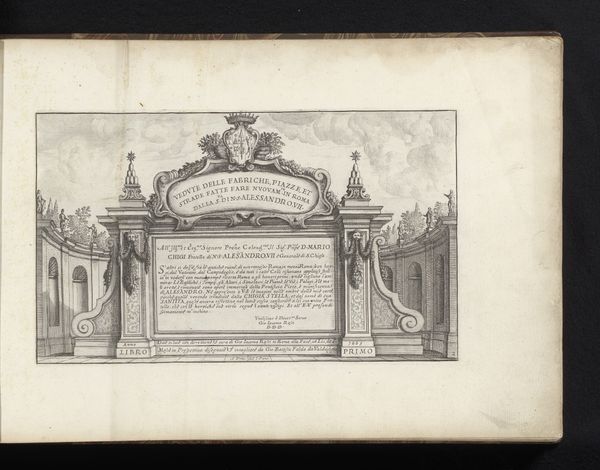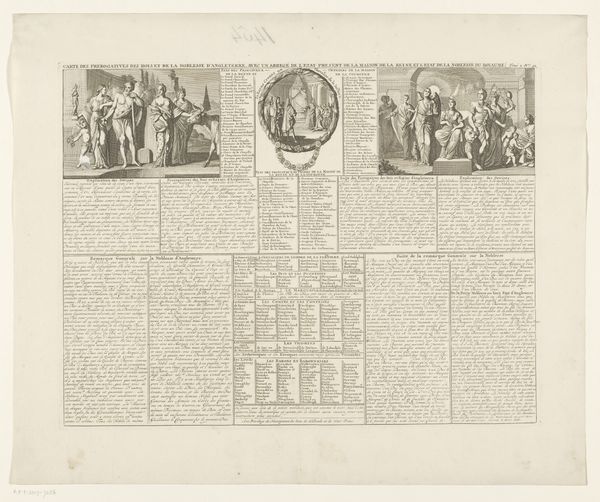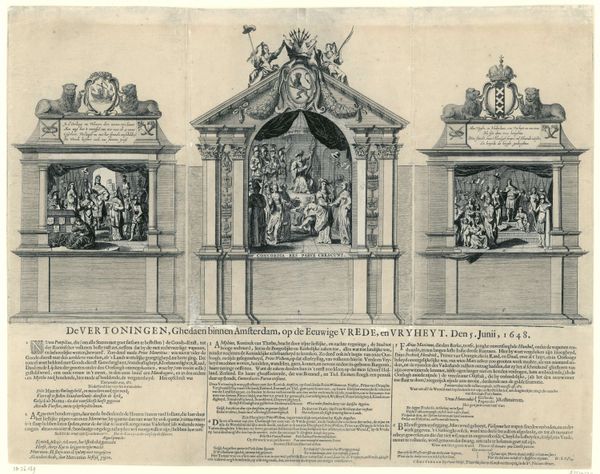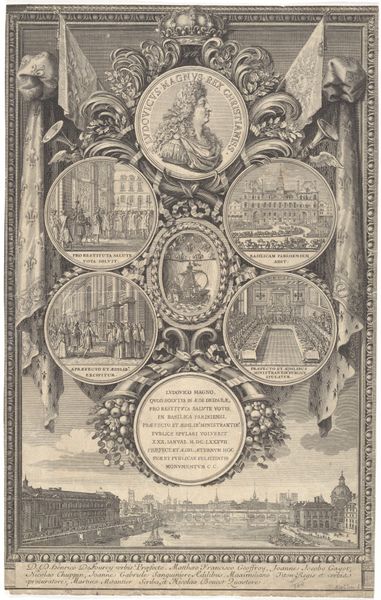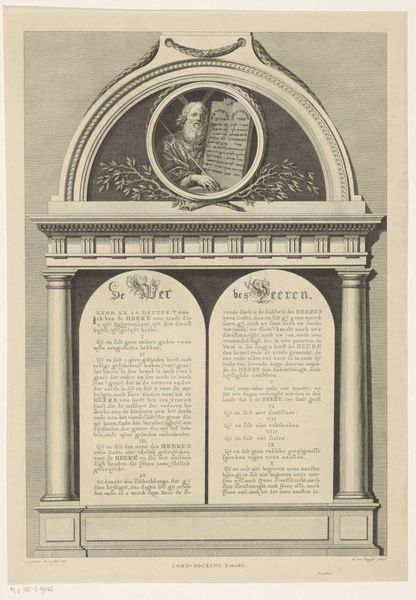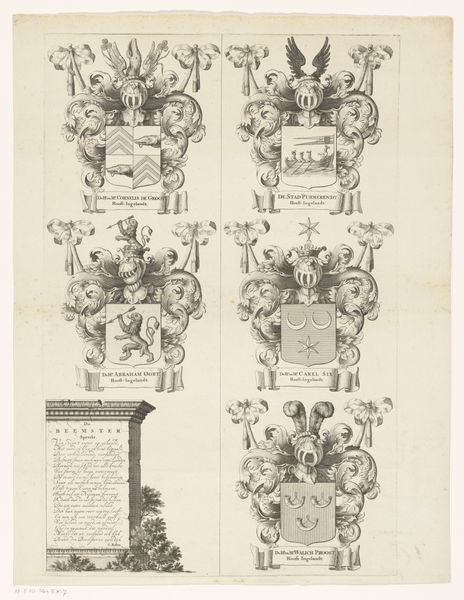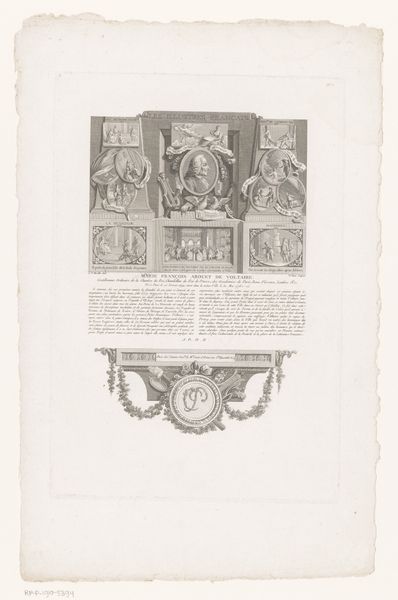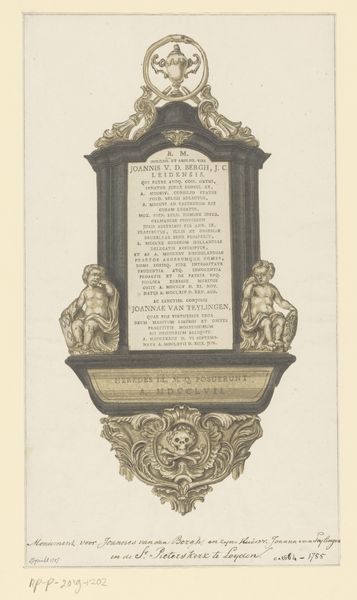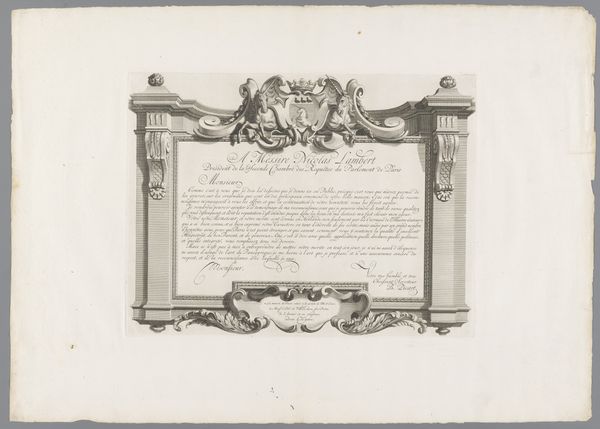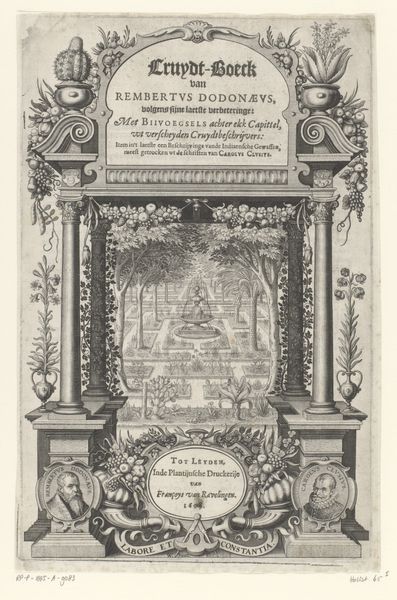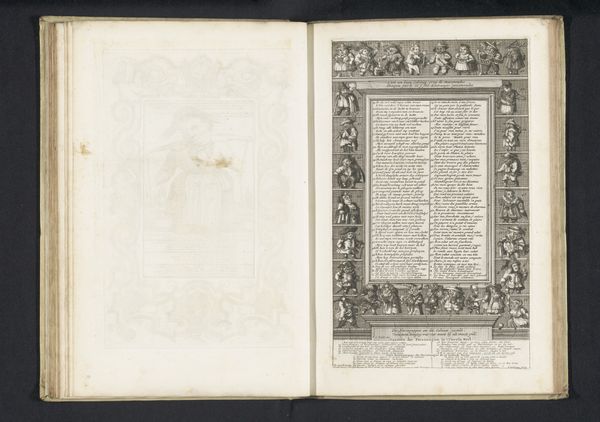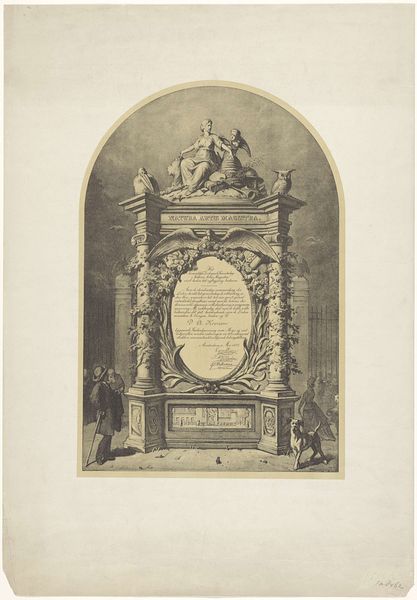
Dimensions: height 390 mm, width 467 mm
Copyright: Rijks Museum: Open Domain
Curator: I find myself immediately drawn into the detailed world presented in this engraving. Editor: Yes, it’s titled "Koninklijke Almanach voor 1832," a piece from 1831 now residing here at the Rijksmuseum. An almanac intended for King William, fabricated as decorative printmaking. Tell me what catches your eye first. Curator: The composition is undeniably striking. The division into three distinct arched sections, almost like triptych panels, lends a unique sense of order. Look how the vertical columns are not just structural, but actively engage with baroque visual rhythm across the work. Editor: Absolutely. The construction is clearly deliberate, mirroring divisions of labour. From an artisan's perspective, consider the labor involved in executing this piece with engraving tools alone! There is such precision of mark-making, indicating both the time spent on each cut and decisions made when committing to the copper plate. The final almanac, essentially information made beautiful, elevates daily life with symbolic status for Dutch royalty and nobility. Curator: Indeed! The strategic arrangement of historical vignettes above each columnar frame seems intentionally placed. Semiotically, there appears to be some intentional commentary being made in visual language here with how architectural elements merge into images representing social strata or societal progress. Editor: What I am interested in, particularly, is who were the specialized workers who created such imagery from the ground up. Curator: That's a fine line of inquiry indeed. However, the execution in the "Koninklijke Almanach voor 1832" transcends utility. It offers a view of the King's world mediated through crafted aesthetic structure. Editor: It is such detail in production, with specialized labor as fine ornament. I am intrigued how an almanac, such as this, serves less as historical fact, and more as artifact representing a worldview manufactured by human hands. Curator: Indeed. The intersection of process, intention, and reception is where its real value as document is. Editor: Forging historical representation requires that level of skill; making visual construction almost inseparable from history. It remains an engaging testament to crafted materiality nonetheless!
Comments
No comments
Be the first to comment and join the conversation on the ultimate creative platform.
